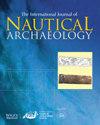Riddarholmen飞船谜题的最新进展:对16世纪早期克林克建造的运炮战舰建筑的新解读
IF 0.6
3区 历史学
0 ARCHAEOLOGY
International Journal of Nautical Archaeology
Pub Date : 2023-08-18
DOI:10.1080/10572414.2023.2238093
引用次数: 0
摘要
本文章由计算机程序翻译,如有差异,请以英文原文为准。
Recent Advancements in the Riddarholmen Ship Puzzle: A New Interpretation of the Architecture of an Early 16th-century Clinker-Built Gun-Carrying Warship
ABSTRACT The 16th-century Riddarholmen Ship was discovered in the middle of Stockholm in 1930. Despite being exhibited since 1947, the efforts to reconstruct the ship have been limited. A substantial portion of the recovered parts has never been put on display. This paper aims to shed new light on the ship´s architecture using the original material from the excavation together with an inventory of the timbers in the collections of the Medieval Museum. From this, it is argued that the ship originally had a full deck, three masts, and a forecastle and that it resembles an early purpose-built, gun-carrying warship.
求助全文
通过发布文献求助,成功后即可免费获取论文全文。
去求助
来源期刊

International Journal of Nautical Archaeology
ARCHAEOLOGY-
CiteScore
1.40
自引率
20.00%
发文量
30
期刊介绍:
The International Journal of Nautical Archaeology is a forum for the exchange of ideas and research relevant to all aspects of nautical and maritime archaeology. Published twice a year in print and online, each issue of 224 pages contains peer-reviewed original articles, notes and book reviews. IJNA addresses the theory and practice of archaeology and related academic disciplines which investigate human associations with water and waterborne craft of all periods throughout the world, on seas and inland waters. Aiming to encourage a fuller understanding of the maritime past within its wider context, IJNA keeps readers abreast of the latest discoveries, new interpretations and theoretical approaches.
 求助内容:
求助内容: 应助结果提醒方式:
应助结果提醒方式:


